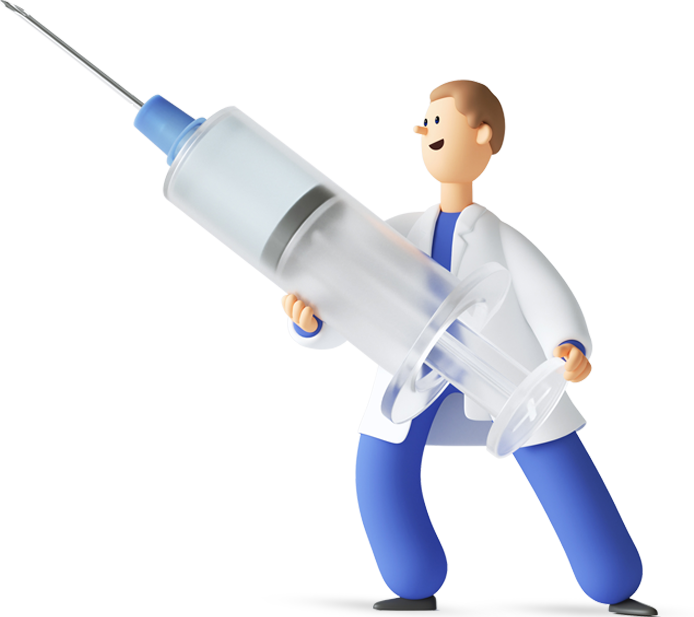
Reduction of the Lower Concha What is it?
Conchae are structures in the nose that are vital for respiratory functions. One of their main functions in the nose is to slow down the inhaled air by slowing it down and to warm the air to about 25°C before it travels to the lungs, thus helping to protect the lungs. It also humidifies the air, removes foreign particles and impurities and produces some enzymes.
The turbinates grow and shrink from time to time depending on the blood circulation in order to fulfil their functions during breathing. This dynamic structure ensures that the nasal airways are no longer fixed and become more flexible and controllable by adapting to environmental factors. In this way, the turbinates help the respiratory tract to function properly and protect the lungs from external factors.

Concha Hypertrophy (Nasal Flesh Growth) Why Does It Happen?
Conchae are important structures that fulfil nasal functions and have a very sensitive structure. Bone and soft tissues in the nose may occasionally swell and grow more than normal. This condition is called "Concha Hypertrophy" or "Nasal Flesh Growth" among the people. Generally, the inferior turbinate (nasal flesh) grows, while rarely the middle turbinate may grow.
Lower Concha Enlargement: Enlargement of the inferior turbinate is caused by deviated septum (curvature of the nasal bone), most often due to allergic causes or nasal trauma. Lower turbinate enlargement is rarely seen in children. Apart from this, pregnancy, hormonal changes and some medications can also cause inferior turbinate enlargement. Especially in people with allergic disorders, inflammation in the concha tissues causes oedema (swelling), vasodilation and increased blood supply, causing the concha to enlarge.
Deviation and Compensatory Growth: In people with deviated septum, the nasal cavity on the side of the curvature narrows, while the nasal cavity on the other side expands. This widening space causes the concha to grow to provide normal airflow. This condition is called "Compensatory Hypertrophy". In other words, in order for the air flow to continue in the narrowed area due to deviation, the concha tries to compensate for this deficit by growing.
Hormonal Changes and Diseases: Hormonal changes during pregnancy, sinusitis, thyroid gland diseases, diabetes or excessive hormone production can also lead to increased blood supply and oedema formation in the turbinates. This causes the concha to grow.
Concha Bullosa (Concha Bullosa): The sinuses in the nose can sometimes unexpectedly form air sacs in the middle turbinate and can be located in the bone structure in this region. This condition is called "concha bullosa". Concha bullosa can cause the middle turbinate to grow and block the airway, which can cause nasal congestion.
As a result, enlargement of the turbinates can cause nasal congestion and make breathing difficult. Such structural changes may require treatment and are usually corrected by surgical intervention.

Concha Hypertrophy (Nasal Flesh Growth) How is it diagnosed?
Hypertrophy of the inferior turbinate may occur when soft tissue, bone or both structures in the turbinate grow together. Correctly determining in which region this growth occurs is very important for the correct selection of treatment methods. Because different treatment approaches may be required between soft tissue growth and bone growth.
Diagnostic Methods: In patients with symptoms of Concha Hypertrophy (nasal flesh growth), an intranasal examination is performed to make the correct diagnosis. This examination can be performed painlessly, usually by physical examination, radiographic imaging or endoscopic cameras. Cameras allow a detailed examination of the inside of the nose and provide a clear view of the location and size of the growth in the turbinate.
If necessary, the doctor may order more detailed examinations and imaging modalities (e.g. CT scan or MRI). These detailed examinations are useful both to confirm hypertrophy and to understand whether the growth is due to bone or soft tissue.
Accurate diagnosis and evaluation helps to determine appropriate treatment options. In the treatment of hypertrophy, different options such as drug treatments, nasal sprays or surgical intervention can usually be applied.
Frequently Asked Questions
How is lower turbinate reduction aesthetics performed?
In the treatment of turbinate hypertrophy, the turbinates are reduced through the nose with endoscopic surgery. This method provides rapid healing and less pain.
Does the nasal congestion disappear after the operation?
Yes, lower turbinate reduction aesthetics usually relieves congestion in the nose. This can facilitate breathing by opening the nasal cavity.











